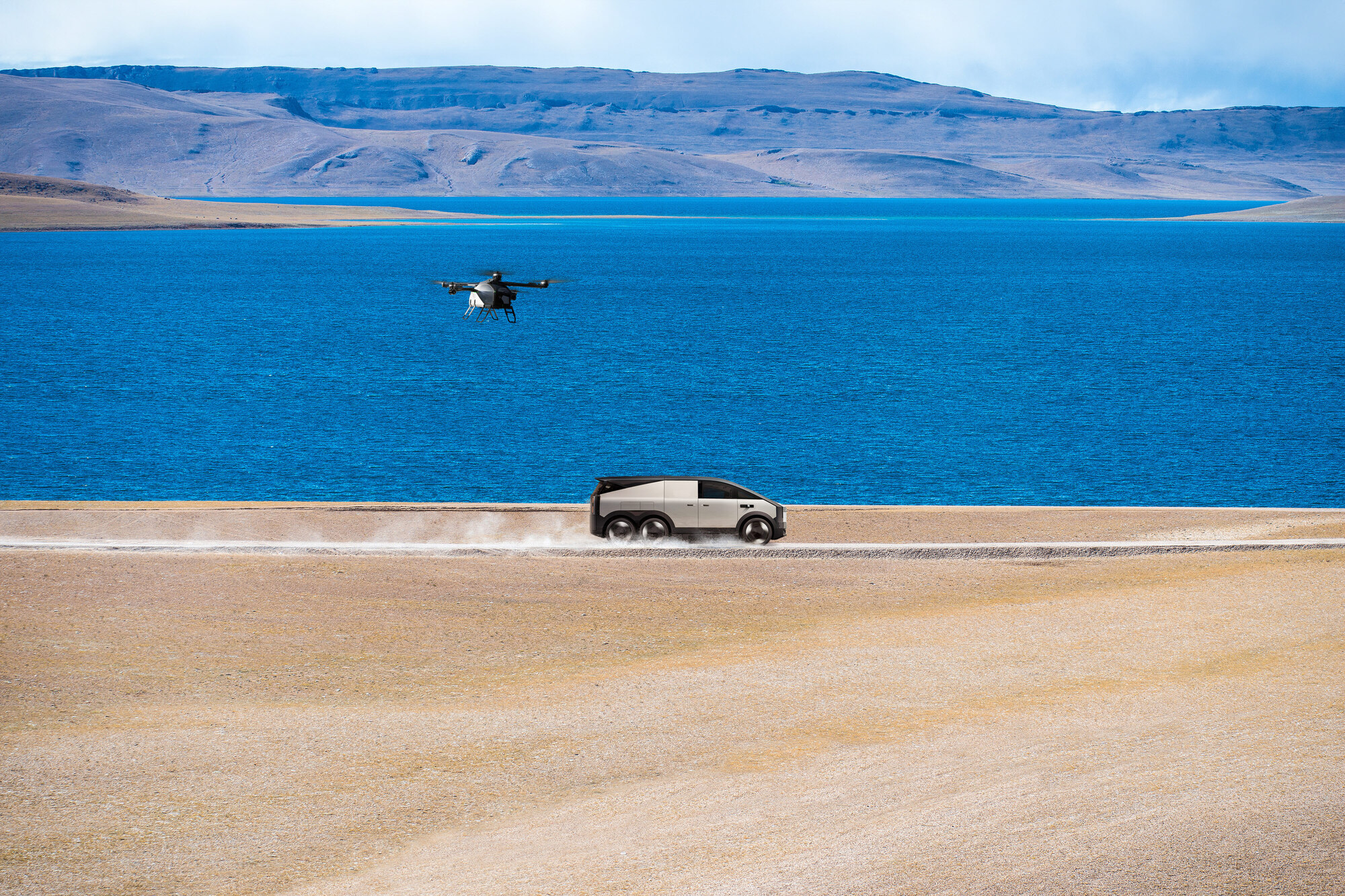The scene looked like something between an auto show and a sci-fi premiere - because who wouldn’t want to see a six-wheel SUV transform into a hovering aircraft? Beneath Dubai’s skyline, the so-called “ground mothership” opened its rear compartment, and an elegant air module unfolded its rotors, deployed landing gear, and took off in one smooth motion. It’s a mechanical ballet disguised as a tech demo: eight control modules, fourteen actuators, and a 700-kilogram airframe docked into an SUV-sized vehicle in under five minutes. Park it, and the mothership doubles as a mobile charging station, juicing up to six flights on a single charge.
Flying, simplified
Inside the air module, ARIDGE trims the cockpit down to one stick. Forward to accelerate, twist to turn, lift to climb. Even your cousin who struggles with a Go-Kart could, theoretically, pilot this thing after a few hours of practice. Prefer to do nothing but enjoy the view? Autonomous mode handles everything, from takeoff to landing, including a one-touch “return-to-home” function. Two flight modes, “Comfort” and “Sport,” let you feel either serene or slightly heroic while hurtling a 700-kilogram vehicle into the sky.
Design-wise, the Land Aircraft Carrier looks like a lunar rover that spent a weekend at a tech spa: crisp geometric lines, crystal-strip LEDs, and semi-transparent panels revealing the stored aircraft. Measuring 5.5 meters long, 2 meters wide, and fitting in a standard parking space, it drives on a regular Class C license. Six wheels, rear-wheel steering, 1,000 kilometers of range, and enough energy to power the air module whenever needed - practically your friendly neighborhood transformer.
ARIDGE didn’t skimp on safety either. Redundant systems abound: propulsion, power, flight control. Extreme “Three High” trials - high heat, altitude, and cold - have been survived by over 200 units. Aviation-grade reliability meets automotive practicality, a fusion that gives you just enough confidence to imagine your commute might someday involve a takeoff.

From rescue missions to weekend getaways
ARIDGE’s ambitions go beyond joyrides. The company envisions low-altitude mobility networks connecting cities, suburbs, and even emergency rescues. Already, 130 flight camps are planned across China, with a target of 200 by year’s end. Whether it’s a medical evacuation or hopping over city traffic like a Bond villain, the modular concept promises to take off almost anywhere.
Meanwhile, in Guangzhou, the ARIDGE Intelligent Manufacturing Base, a 180,000-square-meter futuristic facility, prepares for mass production. Ten thousand air modules a year, powered by photovoltaic energy and aviation-grade quality control, ensuring your future flying car is both sustainable and terrifyingly efficient.

Bridging sky and earth
Founder Zhao Deli calls the transformation from XPENG AEROHT to ARIDGE “a leap from vision to reality,” a symbolic bridge between sky and earth.

With deliveries planned for 2026 and sales for 2027, ARIDGE isn’t just imagining the future of transportation - it’s trying to assemble it, piece by hovering piece.
A reality check at cruising altitude
Dubai might have cheered the first flight, but don’t start canceling your train ticket just yet. ARIDGE’s vision glosses over the hard realities: urban air traffic management, strict European safety regulations, noise limits, and the sheer complexity of integrating flying cars into existing cities. What’s easy in the desert: wide-open space, sparse traffic, lenient regulations - is just a lot harder in Europe’s dense, tightly regulated urban landscape.
Technically, the modular aircraft works. Socially, legally, and logistically, the skies may not be ready just yet. Flying cars are seductive, cinematic even, but the dream of a daily commute above the city is still very much a work in progress - at least on this side of the planet.
Photo Copyright: ARIDGE
Secure your MOTION MAG copy online now: EDITION SIX.


